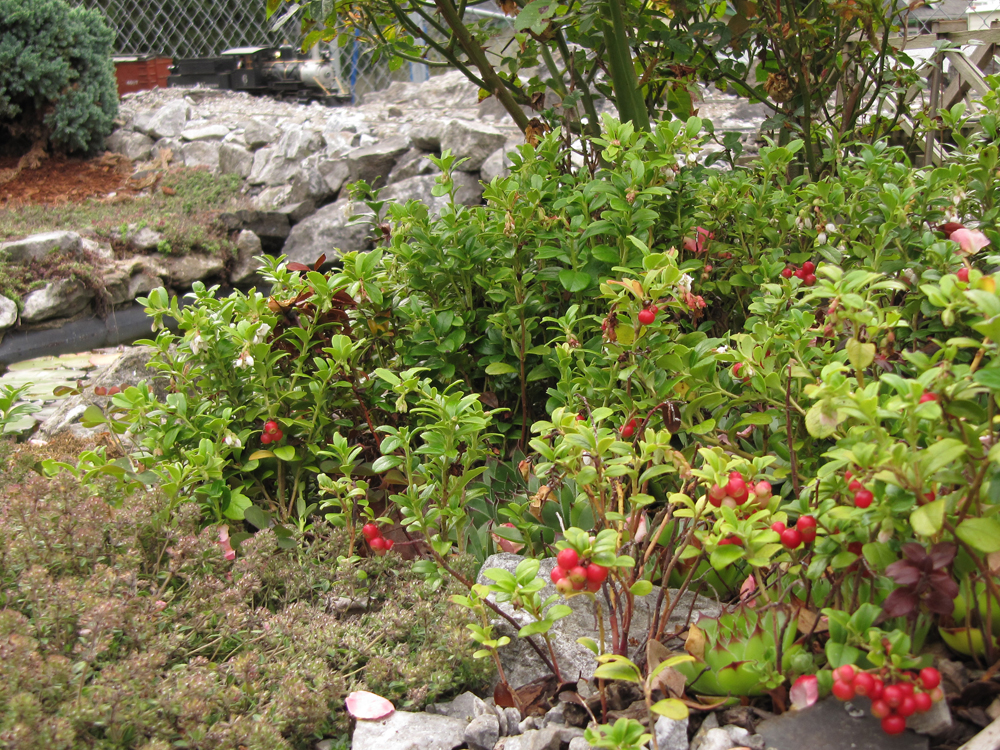Lingonberry or mountain cranberry
Common name: Lingonberry, mountain cranberry
Latin name: Vaccinium vitis-idaea
Plant type: Perennial
USDA Hardiness Zones: 2-6
Cultural needs: Moist, well-drained, very acidic soil, full sun to partial shade
Plant size: 4-12″, depending on variety and culture
Hello, Zone 2 gardeners! This naturalized Scandinavian import is hardy to -50°F! Mountaincranberry, cowberry, partridgeberry, and foxberry are some of its local names but, in Sweden, it’s lingon or lingonberry. Similar to tart cranberries, but smaller and juicier, lingonberries were a big part of the early Scandinavian diet and grew abundantly in forests and fields where the soil is acidic. It sometimes grows in peat. Clumping stems almost create a kind of scrub forest, although we usually grow it as a groundcover. The short, upright plants have small, glossy, evergreen leaves that turn bronze in winter; ¼” pink bells bloom in June to July. Harvest the bright red, edible berries in August or September (or leave them for a pretty scene).

In the photo, you’ll see a few whitish-pink flowers along with the fruit. This plant needs to roam, so use it where its underground-running stems can spread a little. You can obtain other varieties online, such as V.v. ‘Minus’, only 4-5″ high, or V.v. ‘Koralle’. Dave’s forum allows trades of plants and seeds, but lingonberry seeds are viable only a very short time in the fall.
Need another hardy perennial suggestion? Try miniature sedum.













